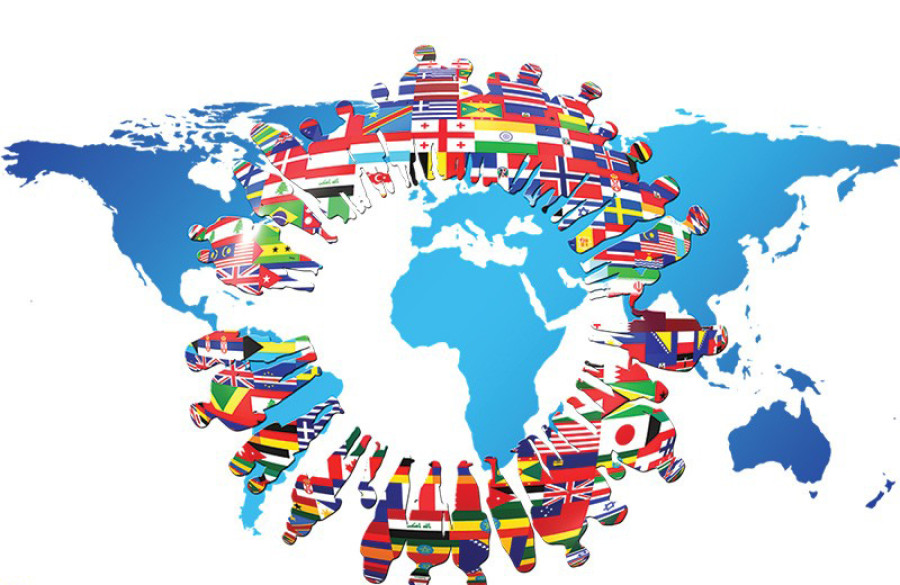Opinion
Soft power
In diplomacy, nations draw from intangible heritage and use culture as a wild card
Mahendra P Lama
The very nature, contents and orientation of international relations have shown some remarkable changes in the last three decades or so. They are now more complex as the principles and instruments of engagement are transforming into unorthodox pathways. Simmering tensions that have gripped Bretton Woods institutions like the World Bank and the International Monetary Fund, marginalisation of the basic principles of the World Trade Organisation, and setting up of parallel institutions like the Asian Infrastructure Investment Bank have given a new twist to the liberal school’s viewpoint that international relations are essentially market-centric.
What is becoming pertinent is what constructivist school vociferously advocates the issue of identity and interest as the core intent. As the course of international relations started taking newer routes, their interpretations too started acquiring innovative terminologies. It moved from borders as geometric lines to hard and soft borders, basic needs to human security discourse, key economic indicators to human development indices, and planning and development to sustainable development goals. Traditional government-to-government diplomacy then mutated into public diplomacy, and national power renegotiated into military and soft power. David Ricardo’s classical ‘comparative advantage’ became ‘core competence’ of CK Prahlad and Garry Hamel. In moving towards these new popular jargons, it was conveniently forgotten that the core values and fundamental principles of all these practices actually always existed.
Non-state actors
For instance, it is not that non-state actors were never active in international relations, but the re-interpretation of their role is something new. Rabindra Nath Tagore’s ‘Jana Gana Mana’ was adopted as the Indian national anthem, and his own poem ‘Aamar Sonar Bangla’ was made the national anthem of Bangladesh. Tagore had a visible influence on his Sri Lankan student Ananda Samarakoon in Viswbharati who later composed the national anthem ‘Sri Lanka Matha’. Ambar Gurung, an Indian Gorkha from Darjeeling, shifted his base to Nepal and provided the music composition to Nepal’s national anthem ‘Sayaun Thunga Phool Ka Hami’. All three of them were perfect and effective instruments of public diplomacy and soft power. This immeasurable influence of non-state actors happened outside the tight frame of orthodox state-to-state diplomacy.
Therefore, when celebrated scholar Joseph Nye introduced the concept of soft power in his book Bound to Lead: The Changing Nature of American Power, he, in fact, gave reincarnation to the already existing visible and intangible non-military practices used by various nations to achieve their national interest goals and also to solidify their national power. For him ‘soft power’ is ‘the power associated with attracting others and getting them to want what you want’. Hard power involves an exorbitant price at the cost of development, its destructive capacity is very extensive, and its very intent is to damage and destroy and propage self-existence. But in the advocacy of soft power, the very intent is to create, harmonise and coexist.
In the conduct of diplomacy, nations draw from their intangible heritage and tend to use ‘culture as a wild card’ and also as a ‘navigational compass’. In public diplomacy, the most potent instrument has been to highlight connectedness. Its invariably done through cinema, radio, teleserials, soap operas, religious practices, knowledge sharing and even science and technology. India had a range of foreign language broadcasts. Today, Chinese broadcasts pervade the entire Himalayan region and the global world with the message of ‘peaceful rise’.
Soft power has its own flow. One does not know where it strikes the most. Everybody wonders how the eruption of an essentially people-centric conflict to bring substantial transformation in Nepal’s traditional social structure, political composition and economic orientation was called Maoist movement. Why a Maoist movement and not Leninist and Marxist? Mao possibly had its partial origin and familiarity from Chinese-aided projects. The Chinese built roads, irrigation, power plants, industry and social projects and had definite ideological contents. The project teams led a very frugal life, and used local raw materials and workers. They would also distribute Mao lapel pins. This possibly would have introduced simple Nepali folks to Mao who was then leading the Cultural Revolution in China (1966-76). No one could imagine the impact of economic assistance as a soft power instrument in this manner. This even got extended to the Indian village of Naxalbari in Darjeeling district contiguous to eastern Nepal.
Symbols and brand names
The use of symbols as soft power instruments has been a crucial aspect of global diplomacy. The Russian bear, Chinese dragon, ASEAN tigers, Indian elephant, Uncle Sams, Kabuki and Coke and KFC are images that mesmerise the global audience. Korean, Chinese and Japanese diplomacy is full of symbols and brand names. One encounters all these symbols and objects in the famous Jianchuan Private Museum in Chengdu in China. During the Cultural Revolution, extensive use of calligraphy, clocks, mirrors, badges, mugs, plates, bowls, sculptures, tea pots, jars, vats, plaques and new China porcelain was made as propaganda items.
Some deploy soft power in a quirky way. The British India government had serious geo-strategic challenges in the entire Himalayan region to stop Russian expansionism and thwart Chinese influences. The stumbling block was religion. Christianity in their sleeves and Buddhism in Tibet were two strikingly different faiths, beliefs and value systems. So in order to enter Tibet, they first used coercive tactics like the Younghusband Mission in 1903. However, it was just necessary but not sufficient. Therefore, they supplied modern gadgets like radios, wrist watches, hunting guns, Parker pens, binoculars and cameras as hitherto unknowns to attract the Tibetan elite. Tibet, an essentially orthodox society, witnessed football and cricket games as non-cultural soft power.
Lama is a former member of the National Security Advisory Board of the Government of India.




 5.39°C Kathmandu
5.39°C Kathmandu










%20(1).jpg&w=300&height=200)

